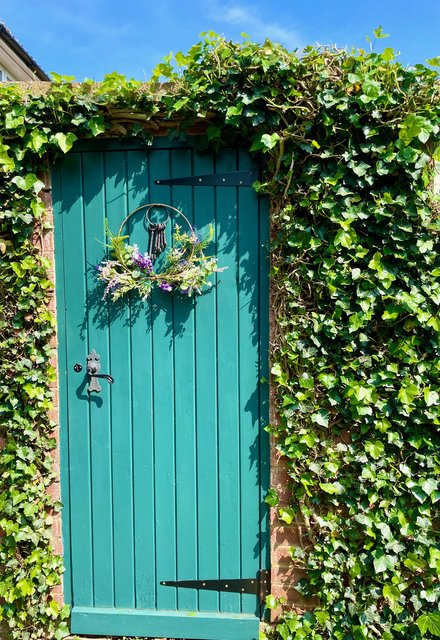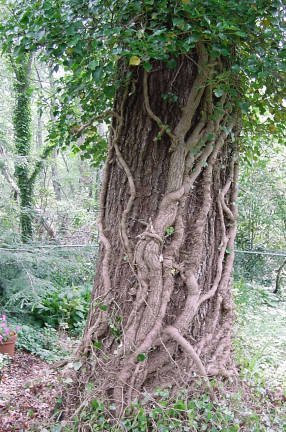David777
Well-known Member
- Location
- Silicon Valley
Two non-native plants I strongly dislike most here in California are English Ivy and Ice Plant.
Google AI:
English Ivy (Hedera helix) has a rich history, native to Europe, North Africa, and parts of Asia, where it was used in ancient Greek and Roman culture for its symbolism and even medicinally. European colonists introduced it to the Americas as an ornamental groundcover and for its aesthetic appeal, though it quickly became an invasive species in North American ecosystems. Its ability to thrive in varied environments and its evergreen nature made it a favored choice for landscaping and decorating historic buildings. Unfortunately average citizens have little understanding of invasive plants, so don't care either way. To them ice plant flowers are pretty providing value.
Ornamental Planting:
European colonists brought English Ivy to the Americas around the 17th and 18th centuries, initially planting it for its evergreen foliage and use as a "carefree" groundcover
It grows many places in older California urban areas, especially about stream ravines. Many of us hate it because it tends to dominate native plants, is a very dense messy plant on the ground, and is full of spiders and bugs that thrive within its shelter. Aesthetically on fences, walls, and buildings, no No and NO, this person is not a fan though understand why settlers though it was special, especially since it is very low maintenance and green.
Another invasive plant I dislike is ice plant that early Californian's extensively planted about our coastal areas that have destroyed habitats of our native bluff species. Construction companies also extensively used it to stabilize soil in tract housing developments. It is also low maintenance, and hard to eradicate once established. If I had it my way, a state program would get rid of it and be replaced with native species. To do so would require hiring climbing crews with ropes that would connect chains over bluffs to root area, and then yank them out. In a few urban areas like Pacific Grove, ice plants are fine and maintained by residents.
Ice plant (Carpobrotus edulis) is an invasive species, particularly in coastal California, where it was intentionally introduced for erosion control but now outcompetes native plants for resources, alters soil composition, and destabilizes coastal areas. It forms dense, sprawling mats, spreads rapidly via stem fragments and seeds, and is difficult to control, harming native ecosystems and leading to a decline in biodiversity.
How it became invasive:
Intentional Introduction:
The plant, native to South Africa, was introduced in the early 1900s to stabilize soils along railroad tracks and later along roadsides by agencies like Caltrans. For decades, it was also sold and used as an ornamental landscape plant for its fast-growing, ground-covering nature and bright flowers.
Google AI:
English Ivy (Hedera helix) has a rich history, native to Europe, North Africa, and parts of Asia, where it was used in ancient Greek and Roman culture for its symbolism and even medicinally. European colonists introduced it to the Americas as an ornamental groundcover and for its aesthetic appeal, though it quickly became an invasive species in North American ecosystems. Its ability to thrive in varied environments and its evergreen nature made it a favored choice for landscaping and decorating historic buildings. Unfortunately average citizens have little understanding of invasive plants, so don't care either way. To them ice plant flowers are pretty providing value.
Ornamental Planting:
European colonists brought English Ivy to the Americas around the 17th and 18th centuries, initially planting it for its evergreen foliage and use as a "carefree" groundcover
It grows many places in older California urban areas, especially about stream ravines. Many of us hate it because it tends to dominate native plants, is a very dense messy plant on the ground, and is full of spiders and bugs that thrive within its shelter. Aesthetically on fences, walls, and buildings, no No and NO, this person is not a fan though understand why settlers though it was special, especially since it is very low maintenance and green.
Another invasive plant I dislike is ice plant that early Californian's extensively planted about our coastal areas that have destroyed habitats of our native bluff species. Construction companies also extensively used it to stabilize soil in tract housing developments. It is also low maintenance, and hard to eradicate once established. If I had it my way, a state program would get rid of it and be replaced with native species. To do so would require hiring climbing crews with ropes that would connect chains over bluffs to root area, and then yank them out. In a few urban areas like Pacific Grove, ice plants are fine and maintained by residents.
Ice plant (Carpobrotus edulis) is an invasive species, particularly in coastal California, where it was intentionally introduced for erosion control but now outcompetes native plants for resources, alters soil composition, and destabilizes coastal areas. It forms dense, sprawling mats, spreads rapidly via stem fragments and seeds, and is difficult to control, harming native ecosystems and leading to a decline in biodiversity.
How it became invasive:
Intentional Introduction:
The plant, native to South Africa, was introduced in the early 1900s to stabilize soils along railroad tracks and later along roadsides by agencies like Caltrans. For decades, it was also sold and used as an ornamental landscape plant for its fast-growing, ground-covering nature and bright flowers.





